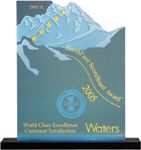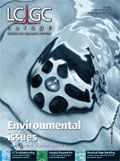Renewal of distribution partnership
NEXUS Biosystems has announced that it has renewed its worldwide marketing agreement with Bruker AXS to continue to globally market, sell and support the NEXUS Crystal Farm line of products. The range of products is an expanding line of automated instrumentation focused on protein crystallography research.
NEXUS Biosystems has announced that it has renewed its worldwide marketing agreement with Bruker AXS to continue to globally market, sell and support the NEXUS Crystal Farm line of products. The range of products is an expanding line of automated instrumentation focused on protein crystallography research.
At the centre of the Crystal Farm range is a high-resolution imaging system that has the ability to create image hanging, sitting or micro-batch drops in virtually all plate types. The Crystal Navigator is a scalable web-based software that can be used to directly or remotely access the system control and image analysis. This line of automated instrumentation products is available in three different models, the CF-150, CF-400 and the CF-5000, which each address different research needs.
For more information visit the companies' websites at www.nexusbio.com and www.bruker-axs.com
Waters SCORE for the fifth time
Waters has been awarded with its fifth consecutive Omega Northface Scoreboard SM award for exceeding customer expectations in service and satisfaction during 2005. The award is administered by the Omega Management Group that implements customer satisfaction and retention programmes.

The award was formally presented at the SCORE Conference 2006 in Boston, Massachusetts, USA. Omega measures customer satisfaction via customer input and had surveyed 3100 customers in 20 countries. According to the results Waters received a score of 4 or higher out of a possible 5 in technical support, field service, sales process, customer service and product quality.
For more information visit the company's website at www.waters.com
Fishing for Thermo transaction
An industry-transforming transaction has been announced by Thermo Electron and Fisher Scientific International. The boards of directors from both companies have unanimously approved a definitive agreement to combine the two companies in a tax-free, stock-for-stock exchange.
This merger is expected to produce 2007 revenues of $9 billion and the newly formed company will be called Thermo Fisher Scientific. Under the terms of the agreement, Fisher will receive 2.00 shares of Thermo common stock for each share of Fisher stock it owns. Upon completion of the transaction approximately 39% of the combined company will be owned by Thermo's shareholders and 61% by Fisher's. The transaction will be treated as a reverse merger with Thermo as the acquirer.
Although approval by both companies' shareholders and customary closing conditions and regulatory approvals are still required, the transaction is expected to close in the fourth quarter of this year.
The companies hosted a webcast and conference call on the release of this information, of which the webcast and accompanying slides as well as an audio archive of the call are available on both companies' websites.
For more information visit the websites at www.thermo.com and www.fisherscientific.com
Mycotoxin laboratory wins research prize
The second highest Austrian research prize has been awarded to the Christian Doppler Laboratory for mycotoxin research. The laboratory is based at the Department for Agrobiotechnology Tulln (IFA-Tulln) of the University of Natural Resources and Applied Life Sciences, Vienna.

The Dr Wolfgang Houska Award was open to all scientific and engineering research groups in Austria but the €50000 prize was given to Professor Rudi Krska and his team for their development of a fast and reliable method of mycotoxin detection.
The winning research group used a 4000 Q TRAP LC–MS–MS system from Applied Biosystems/MDS Sciex to simultaneously measure 10 different mycotoxins in less than 7 minutes. However, after receiving the award the group has achieved measurement of 40 mycotoxins in 40 minutes.
For more information visit Applied Biosystems' website at http://europe.appliedbiosystems.com

Determining Enhanced Sensitivity to Odors due to Anxiety-Associated Chemosignals with GC
May 8th 2025Based on their hypothesis that smelling anxiety chemosignals can, like visual anxiety induction, lead to an increase in odor sensitivity, a joint study between the University of Erlangen-Nuremberg (Erlangen, Germany) and the Fraunhofer Institute for Process Engineering and Packaging (Freising, Germany) combined behavioral experiments, odor profile analysis by a trained panel, and instrumental analysis of odorants (gas chromatography-olfactometry) and volatiles (gas chromatography-mass spectrometry).
Investigating 3D-Printable Stationary Phases in Liquid Chromatography
May 7th 20253D printing technology has potential in chromatography, but a major challenge is developing materials with both high porosity and robust mechanical properties. Recently, scientists compared the separation performances of eight different 3D printable stationary phases.
Detecting Hyper-Fast Chromatographic Peaks Using Ion Mobility Spectrometry
May 6th 2025Ion mobility spectrometers can detect trace compounds quickly, though they can face various issues with detecting certain peaks. University of Hannover scientists created a new system for resolving hyper-fast gas chromatography (GC) peaks.

.png&w=3840&q=75)

.png&w=3840&q=75)



.png&w=3840&q=75)



.png&w=3840&q=75)










